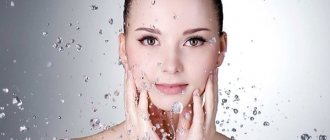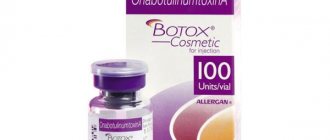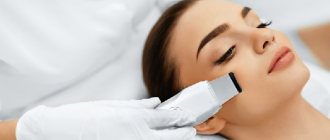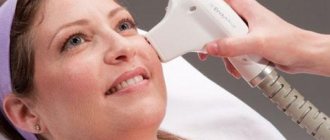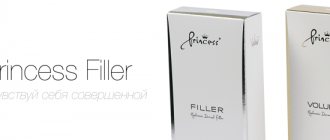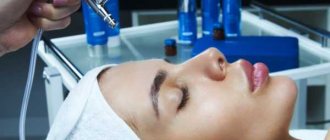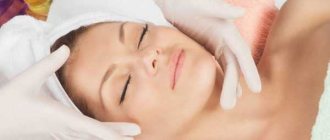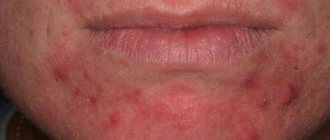Chemical peels are very popular - such procedures can significantly rejuvenate the skin and improve its condition. At the same time, it can be difficult for non-experts to understand how different exfoliants differ from each other. Let's consider one of the most popular options - Jessner peeling, which differs from its analogues in its multi-component composition.
Why do you need exfoliation (exfoliation, cleansing)?
In youth, epidermal cells are quickly renewed, as a result the skin always looks fresh and smooth. Over the years, this process slows down. The stratum corneum, formed by dead cells, becomes increasingly dense. This spoils the complexion and makes it dull. The surface of the epidermis becomes uneven. In addition, an excessively dense stratum corneum makes it difficult for the skin to breathe, which in turn contributes to its premature aging.
And this is where peelings come to the rescue - mechanical, hardware or chemical. The enormous popularity of the latter variety is due to its effectiveness: the face literally transforms and becomes younger before our eyes.
Chemical peels contain acids that delicately loosen the stratum corneum, destroying the connection between dead cells. The procedure is a mild and controlled chemical burn - the acid damages the epidermis and stimulates its recovery.
All chemical peels are divided into superficial, medium and deep. The deeper the impact, the more effective the procedure, but at the same time, the more traumatic it is, so deep peels are rarely used, but medium and superficial varieties are popular.
Under the influence of a chemical exfoliant, the stratum corneum dissolves, and the deeper layers are slightly injured. It sounds scary, but this principle of action is typical for many cosmetic procedures. The fact is that minor tissue trauma stimulates intensive cell renewal. The body strives to restore damaged skin, so it begins to intensively produce collagen and elastin. As a result of accelerated regeneration, the skin becomes more youthful, elastic and smooth.
Features of the technique
Mesopeeling involves injecting a special drug into the skin 1–2 mm, as in mesotherapy. The drug contains 3 active components:
- 1% glycolic acid, which will ensure the destruction of lipid bonds with dead cells, will accelerate the division of stem cells and the synthesis of its own collagen and elastin. Glycolic acid is also involved in normalizing the water balance of epidermal cells. It affects the production of melanin and its uniform distribution throughout the skin, which prevents the appearance of age spots.
- Organic silicon particles, which strengthen collagen and elastin fibers, prevent their destruction, and also activate metabolism in cells.
- Procaine acts as a pain reliever. In addition, procaine dilates blood vessels and accelerates the effect of other components on the epidermis.
This whole “cocktail” will be complemented by amino acids, hyaluronic acid and beauty vitamins. They will ensure the activity of cells in matters of regeneration, fill them with energy and normalize their internal work. Thanks to the acid used, these additives will penetrate much deeper, thereby increasing their effectiveness.
Jessner Peel Composition
Jessner peeling, or, as it is also called, Hollywood peeling, is one of the popular procedures that has won many hearts with its combination of effectiveness and affordability. Legend has it that the composition was developed during World War II by military doctor Max Jessner, who invented an effective hand sanitizer. The naval officers liked the product so much that they began to use it as a facial lotion, and then shared their impressions with their wives, who appreciated the rejuvenating effect of the drug.
The drug's real story is less exciting. Max Jessner was indeed a doctor, but not a military man. He emigrated from Nazi Germany to Switzerland and then to the United States, where he became a professor of dermatology at New York University. There, in 1941, he invented a solution for antiseptics, as well as loosening and exfoliation of the stratum corneum of the skin with hyperkeratosis. Much later, this composition began to be used for skin rejuvenation.
Different acids affect the skin differently. The Jessner peel contains a combination of several acids that provide optimal exposure and effective destruction of intracellular bridges between keratinocytes (epidermal cells).
The composition* of a classic peeling includes:
- 14% resorcinol;
- 14% salicylic acid;
- 14% lactic acid;
- Ethanol.
At the end of the 20th century, modified exfoliant formulations appeared. For example, instead of resorcinol, combinations of lactic and citric acids or trichloroacetic acid can be used. New modifications may act slightly differently than the classic composition, so before starting the procedure it is recommended to check with your cosmetologist which drug will be used.
Who is this procedure suitable for?
There are many superficial and mid-level exfoliants available, and choosing the best one can be difficult. And you don't need to do this! It is best to entrust the choice to a cosmetologist. After an in-person examination and medical history, the doctor will tell you which composition will be most effective in your case - taking into account all the individual characteristics of your body in general and the skin in particular.
Hollywood peeling differs from other varieties in that the same composition can be used for more or less deep exfoliation of the epidermis. This versatility allows the drug to be successfully used to eliminate defects such as:
- Acne and post-acne;
- Increased activity of the sebaceous glands;
- Comedones, enlarged pores;
- Pigmentation;
- Withering, loss of elasticity, firmness;
- Wrinkles of medium depth;
- Melasma*;
- Minor welts and scars.*
The procedure has a complex effect - the face brightens, looks younger, fresher, more toned.
Advantages
- One of the important advantages of this exfoliant is its versatility. It is suitable for all skin types (except for very sensitive ones), for all areas of the skin;
- No age restrictions;
- This option is especially recommended for oily, problematic, unclean skin, with enlarged pores and age spots;
- If the procedure is carried out in a clinic by a qualified doctor, then it is completely safe and the result is predictable;
- The epidermis is restored within 6-10 days, and the visible effect is noticeable immediately after the end of peeling.
Contraindications
- Pregnant and lactating;
- Suffering from diabetes, cancer, autoimmune diseases;
- For inflammation, burns, scratches, rashes, manifestations of dermatological diseases in the treatment area;
- During an exacerbation of any chronic diseases;
- In febrile conditions;
- For 2 weeks after you stop taking certain medications (such as retinoids).
Jessner's composition also has other contraindications. So, you will have to choose an alternative option if you are allergic to any of the components of the composition, rosacea, rosacea, or if your skin is hypersensitive. In such cases, more gentle, delicate preparations with a gentle effect are recommended. It is believed that dark-skinned women should use this exfoliant with caution, as it can noticeably lighten the epidermis.
Hollywood peeling is recommended if you need a quick transformation effect. Your doctor may recommend other medications to address specific skin problems. For example, comparative studies * have proven that salicylic peeling is more effective for acne, although Jessner's composition also shows good results.
Important! Hollywood peeling can only be done in autumn and winter, when solar activity is minimal. Otherwise, there is a risk of hyperpigmentation.
The consequences of mesotherapy are nonspecific
- Pain - with any damage to the skin, pain receptors are irritated, so there may be a pain reaction of varying severity. Its strength depends on individual pain sensitivity, the pH of the injected drug, the area of therapy, and the quality of the needle. Some patients tolerate the procedure quite calmly without pain relief, which is better for the subsequent effect of mesotherapy, according to the doctrine of the mechanism of action. For the category of particularly sensitive people and simply for psychological peace, you can offer local pain-relieving ointments such as “Emla”. But we must remember that the ointment begins its analgesic effect 20 minutes after application, and maximum pain relief will occur only an hour after applying the ointment. So, arrive early for your procedure to really get the maximum pain relief.
- I have already written that the least painful is the administration of hyaluronic acid preparations, and the most painful are vitamins and DMAE. This is due to the pH of the drug, if it is much lower or higher than pH 7.2-7.4, then pain will always be felt when such a drug is administered. Both the diameter of the needle and its sharpness matter. Therefore, during the procedure, it is recommended to change needles more often, they quickly become dull, and, if possible, choose thinner ones. If we talk about the site of injection of the drug, the most sensitive are the back and inner thighs, the nasolabial fold and the middle area of the face.
- Redness at the injection site is a completely normal reaction associated with the vascular reaction to the injection. It usually goes away on its own within 15-30 minutes; in smokers it lasts longer - up to 45 minutes.
- You can quickly relieve this reaction by applying a special soothing mask after mesotherapy. The mask must be sterile, specially packaged and intended only as a mask after mesotherapy. Cream soothing masks should not be applied immediately after the procedure.
- Swelling will also always be a response of the skin to the injected drug and to injury. It depends on the drug administered, for example, after the administration of hyaluronic acid and other gels, the swelling is more pronounced, since these drugs themselves attract water. Swelling may persist for a day and goes away on its own.
- Hemorrhages - a wide variety, from a pinpoint reaction to a needle prick to hematomas - occur with deep administration of the drug, with increased fragility of blood vessels, with a decrease in blood clotting in the patient.
- Unfortunately, it is not possible to completely guarantee that the vessel will not be damaged and there will be no “bruising”. The risk of developing hematomas increases during menstruation, when applying anesthetic ointment, when taking certain medications, such as aspirin, preparations based on ginkgo biloba, green tea, vitamin E. Their use should be stopped the day before the procedure. When administering solid preparations, the risk of hemorrhage is also higher than when administering aqueous solutions.
- What to do if a hemorrhage occurs? Press the bleeding site with your finger, apply cold, use absorbent ointments - “Traumel”, heparin, troxevasin, “Bruise-off”, other masks based on bodyaga, Arnica ointment. It is better to limit yourself to Arnica ointment and Traumeel, because thistle causes peeling of the skin, acting as a peeling.
- Vagal syndrome - what is it? Sometimes, as a response to pain, cold extremities, dizziness, and decreased blood pressure occur - these symptoms are associated with irritation of the vagus nerve and are stopped by the administration of a special drug.
What happens when you visit the clinic
It is recommended to consult with your doctor in advance regarding preparation for the procedure. In some cases, a cosmetologist may recommend the use of special cosmetics with fruit acids. You should not use such products directly on the day of your visit to the clinic; it is better to even avoid moisturizing cream.
The procedure consists of several stages:
- Makeup removal, skin cleansing. The doctor carefully removes the remains of decorative cosmetics and dirt;
- Degreasing the skin;
- Application of the composition. The product is evenly distributed over the face; local application is not recommended. At this stage, tingling and burning sensations are possible - a completely normal reaction. To eliminate discomfort, the doctor can provide air flow to the treated area. Important! If the sensations are very intense, be sure to tell your doctor about this; do not try to heroically endure pain and severe burning, which may indicate an allergic reaction;
- If necessary, after 1-2 minutes, apply a second layer of exfoliant.
Unlike most exfoliants, Hollywood peeling is not washed off in the clinic. A thin whitish coating remains on the face. You can wash yourself 4 hours after the end of the procedure - your doctor will tell you the exact time. This ensures a prolonged effect.
Even when you leave the clinic, the acid molecules will continue their work - dissolving dead cells, moisturizing, disinfecting, and stimulating renewal processes.
Preparations for mesotherapy
The composition of the drugs also differs.
Allopathic mesotherapy
The preparations are prepared mainly on a plant basis, but they may also contain substances of animal origin and artificially synthesized ones.
They mainly consist of:
- various vitamins;
- extracts of various plants;
- medicines;
- hyaluronic acid;
- collagen, elastin.
With the help of the diuretic compositions of the cocktail, swelling on the face is eliminated. The composition of components that improve blood circulation will help overcome rosacea. Beauty cocktails made from collagen, hyaluronic acid and elastin will restore youth.
Homeopathic mesotherapy
The nutrients included in homeopathic medicines allow the body to use its own resources. Plant extracts and various vitamins relieve many facial skin problems.
Don't miss the most popular article in the section: Face fitness for facelift, rejuvenation, muscle tone. Master class from Elena Karkukli
What then?
After washing off the drug, the skin may turn red. Slight swelling, a feeling of tightness, and a slight burning sensation are a normal reaction to exposure.
For skin care, you should use only products recommended by a cosmetologist. In addition, it is important to carefully protect your face from the sun - you will have to forget about the solarium for at least 2 weeks, and when going outside, even in cloudy weather, you need to use a cream with SPF. Thermal procedures are also prohibited - visiting the bathhouse, sauna.
On the third day after the procedure, the skin begins to peel off. This process may take about a week depending on the depth of exposure. It is important not to “help” the skin or tear off the resulting films, although such a temptation will certainly arise - such actions can lead to skin damage and scarring. So you will have to be patient and wait until the peeling stops. During this period, you should not apply decorative cosmetics or use any creams or serums other than those recommended by your doctor.
In cosmetology there is such a thing as a “lunch break procedure”. It denotes effects that provide a quick effect and leave no traces. Jessner peeling is not one of these procedures - after it, the face does not look its best for 5-10 days. For those who have to communicate a lot with people, it is better to plan a visit to the clinic during vacation or before a long weekend.
In some cases, a course of procedures may be required to achieve the desired effect. Its duration and intervals between sessions are determined individually. In some cases, one procedure is enough to noticeably renew the skin, but more often it takes from 3 to 10 sessions to transform. The effect accumulates, and by the end of the course, not a trace remains of past problems - for example, pigmentation, wrinkles, unevenness.
Possible complications and their causes
Clients also leave negative reviews after undergoing facial mesotherapy. If you had to deal with such a body reaction as erythema, before and after photos will not please you.
Erythema is divided into 2 types:
- The so-called rapid erythema occurs from strong vasodilator medications. It passes quickly and should not lead to anxiety in the patient.
- Toxic erythema. Can lead to destruction of skin tissue - necrosis.
Hematomas occur with a certain method of injection. They may appear due to the drug itself.
Facial mesotherapy with the toxic effect of the drug leads to such a dangerous disease as skin necrosis.
You can verify this by comparing before and after photos and finding out reviews from patients. The occurrence of necrosis is possible with a decrease in the body's immunity.
Complications may occur when:
- Injecting the medicine too deeply.
- Poor skin disinfection.
- Insufficiently sterilized medical instruments.
Allergies are also possible. The skin can react both to the beauty cocktail itself and to the substance from which the needle is made. In these cases, the reaction does not occur immediately. Doctors call it “delayed-type dermatitis.”
A rapid allergic reaction is manifested by facial swelling and even Quincke's edema. This complication occurs as a result of a mismatch between facial tissue cells and the administered antigens.
Hypersensitivity is also one of the complications. The skin becomes inflamed upon contact with the injected medication. The body perceives the drug as an irritant.
Preliminary consultation with a specialist and a thorough examination significantly reduces the likelihood of complications after the procedure. To prevent serious consequences, you should answer your doctor's questions honestly.
The listed possible complications arise mainly with injection mesotherapy.
Effect
It’s not for nothing that peeling was called Hollywood. He is able to transform the face in the image and likeness of Hollywood divas, significantly rejuvenate it and get rid of a number of defects. For the sake of such a result, it is worth going through slight discomfort when applying the composition and the forced refusal of dates and parties during the period of peeling.

